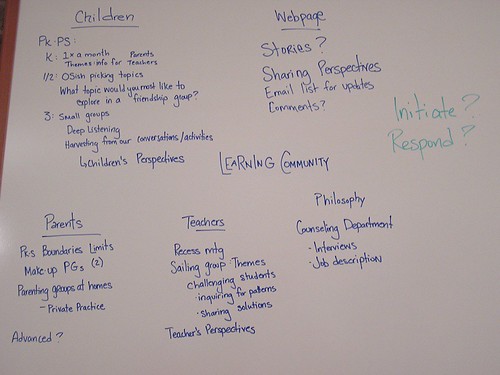
An interesting npr segment on how active our brain gets when we are bored. Daydreams can suck us into an ever-interesting world of distraction. According to this article, if you want to stay engaged with the content at hand, keep your body engaged on something such as doodling. Don't let the mental activity get the best of you if you want to continue focusing, give your hands something else to do.
When the brain lacks sufficient stimulation, it essentially goes on the prowl and scavenges for something to think about. Typically what happens in this situation is that the brain ends up manufacturing its own material.When I host small Friendship Groups with students, I often put a bowl of rocks, shells, stick, cones into the middle of the circle in case anyone needs something to fiddle with. A group the other day began building with the objects while we were discussing some of their problems and concerns. Their sculptures were beautiful and inspiring and a nice example for this article! One child preferred the erasers!
In other words, the brain turns to daydreams, fantasies of Oscar acceptance speeches and million-dollar lottery wins. But those daydreams take up an enormous amount of energy.
The function of doodling, according to Andrade, who recently published a study on doodling in Applied Cognitive Psychology, is to provide just enough cognitive stimulation during an otherwise boring task to prevent the mind from taking the more radical step of totally opting out of the situation and running off into a fantasy world.





